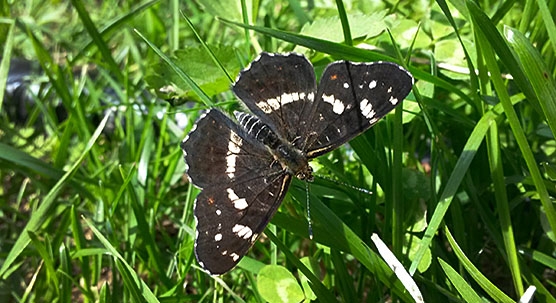Nitrogen deposition elements through the food web – impacts on butterflies and moth species
Nitrogen deposition does not only affect plant biodiversity, but also strongly affects the composition of the remainder of the food web, through the changes in plant composition. In an unprecedented analysis of population changes of butterfly and moth species, an international research team including CML of Leiden University, showed that large, mobile butterflies and moths, feeding on plants that profit from higher soil fertility are becoming more common, at the expense of butterfly and moth species with the opposite traits. The research results were published in the Global Ecology and Biogeography series of scientific articles.
Nitrogen deposition has been – and still is - a major pressure on many nature reserves throughout Europe, as it causes soil eutrophication. So far, mostly the negative impacts of nitrogen deposition on plant biodiversity has been investigated. Eutrophication tends to promote fast growing plant species with higher nitrogen contents. Such species tend to outcompete more slowly growing rare plant species. Whether these impacts also have additional effects on other parts of the food web remained unknown until recently.

An international research team led by the Finnish Environment Institute, to which CML of Leiden University contributed, compiled a large database on population changes among herbivorous insects in Finland over the past few decades. In addition, traits of these species were compiled, including the species’ variety of host plants, mobility, annual number of generations and the requirements of the food plants consumed in the larval stage in relation to the nitrogen content of the soil. When combined with population changes between 1993 and 2012 on over 1,000 butterfly and moth species occurring in Northern Europe, the factors driving increases and decreases in population size could be determined.
The analysis showed that large, mobile butterflies and moths with two or more generations of offspring per year and that either utilise a wide variety host plants or have adapted to feed on nitrophilous plants are becoming more common in nature. Soil eutrophication caused by nitrogen deposition from the atmosphere thus has had a strong impact on the species that have flourished or declined. Ultimately, the nitrogen deposition effects cascade to population changes among butterflies and moths. The results indicate that nitrogen deposition –which is still high in the Netherlands- needs to be combated to protect biodiversity across the entire food web.
